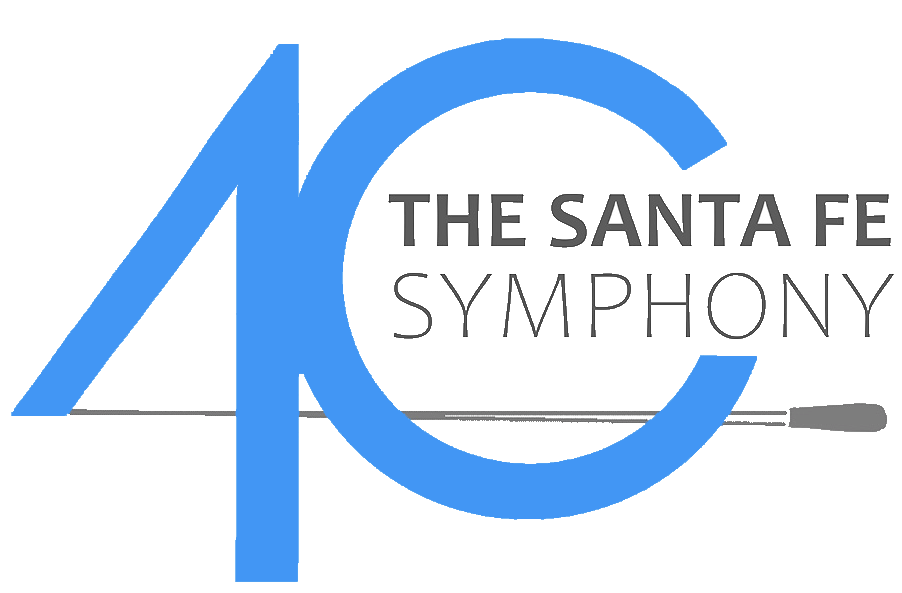
2021 Spring Virtual Concert Series
School for Advanced Research
This concert premiered on Sunday, May 30 at 4:00 PM and is available to view and purchase through June 30.
Featuring works by Jerod Impichchaachaaha’ Tate and Wolfgang Amadeus Mozart, this brilliant spring program presents a blend of incredible music celebrating the diverse culture of Santa Fe. This spectacular concert is filmed on the 15-acre residential campus of the School for Advanced Research, which sits on ancestral lands of the Tewa people in O’gah’poh geh Owingeh—Santa Fe, New Mexico. The wide spectrum of colorful and rhythmic music features works by Native American, Brazilian, and Hispanic composers–and more! Sign up today to watch this fantastic lineup of Santa Fe Symphony talent from anywhere—including the comfort of home!
The School for Advanced Research dedicates itself to the anthropology of the Southwest, as well as the work of Native American artists and writers. Its Indian Arts Research Collection is considered to be one of the most remarkable assemblages of Southwestern Native American art and artifacts in the world, with more than 12,000 items. Its beautiful campus, located on the former estate of Martha Root White and Amelia Elizabeth White, houses a variety of programs, including research initiatives, residential fellowships, and a wide range of public seminars and classes.
Many thanks to Spring Virtual Concert Season Underwriters
![]()
Special thanks to our Concert Sponsor in Part:
The Storr Family Foundation
PROGRAM
STEPHANIE BERG
Trio for Oboe, Horn and Harp
Elaine Heltman, Principal Oboe; Jeffrey Rogers, Principal Horn; Anne Eisfeller, Principal Harp
JEROD IMPICHCHAACHAAHA’ TATE
Raccoon Talk
Carla Kountoupes, Violin
WOLFGANG AMADEUS MOZART
Flute Quartet No. 1 in D
David Felberg, Concertmaster; Kim Fredenburgh, Principal Viola; Dana Winograd, Principal Cello; Jesse Tatum, Principal Flute
LOUIS W. BALLARD
Ritmo Indio
Jesse Tatum, Principal Flute; Elaine Heltman, Principal Oboe; Stefanie Przybylska, Principal Bassoon; Lori Lovato, Principal Clarinet; Jeffrey Rogers, Principal Horn
ALFREDO ROLANDO ORTIZ
Habanera Gris, arr. by Tyler Emerson for harp and vocals
Anne Eisfeller, Principal Harp
Vocalists: Charlotte Sandelin, Soprano; Kathleen Echols Crumbacher, Soprano; Kathrine Keener, Soprano; Kehar Koslowski, Soprano; John Tiranno, Tenor; Gabriel Gabaldon, Tenor; Travis Bregier, Tenor; Richard Schacht, Bass
FRANCISCO BRAGA
A Sonorous Dialogue to the Moon for English horn and bassoon
Rebecca Ray, English Horn; Stefanie Przybylska, Principal Bassoon
GABRIELA LENA FRANK
Leyendas: An Andean Walkabout
Tarqueada
Chasqui
Coqueteos
Carla Kountoupes, Violin; Gabriela da Silva Fogo, Violin; Christine Rancier, Viola; Melinda Mack, Cello
Of Note
Dr. Louis W. Ballard is the acknowledged father of Native American composition. A member of the Quapaw and Cherokee nations, Ballard believed that Native music had to stand on its own without following the styles of other composers. “It is not enough to acknowledge that Native American Indian music is merely different from other music,” he said. “What is needed in America is an awakening and reorienting of our total spiritual and cultural perspectives to embrace, understand, and learn from the Aboriginal American and what motivates his musical and artistic impulses.”
Harpist and composer Alfredo Rolando Ortiz plays the Paraguayan harp, which differs from most other harps. Its unique design produces a magnificent tone and volume, and the string tension is lower than in many other harps, allowing a light and relaxed style of playing. This harp is also played with the fingernails, while the right thumb is used for percussive, rhythmic “thumping” on the bass string
Shawi’ Impanompa’ (Raccoon Talk) is based on an ancient Chickasaw Raccoon Song—”a rhapsodic expression of raccoons, known as chattery troublemakers, in my tribe,” says Jerod Tate. In live performances, the audience is encouraged to participate at certain points in the piece, with finger snapping, stomping, and whispering the word “chatter.”




